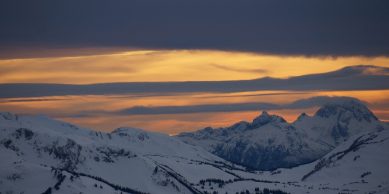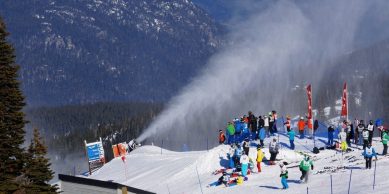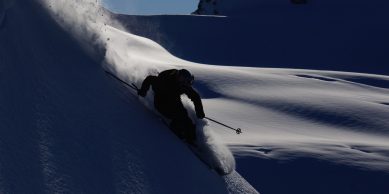 Snow Report is written by paramedic and mountain patroller Wayne Flann and other passionate mountain dwellers. Wayne moved to Whistler in 1979, and has worked as a Blackcomb Ski Patroller since 1984. He is a blogger, father, and avid skier.
Snow Report is written by paramedic and mountain patroller Wayne Flann and other passionate mountain dwellers. Wayne moved to Whistler in 1979, and has worked as a Blackcomb Ski Patroller since 1984. He is a blogger, father, and avid skier.
When a Backcountry Ski Cut Goes Wrong
For more than 35 years, I have played and worked in serious avalanche terrain.
As you can probably imagine, I’ve had my share of experiences dealing with avalanches. Until the end of this year I had been lucky – I’d only had one close personal call where I’d been partially buried – then came December 29, 2014.
On that fateful day, I was in the company of an old acquaintance who was up working with a Russian snowboard magazine. I had been helping the eight-person crew, showing them some local terrain. The group consisted of advanced riders, and the idea was to expand into some steeper terrain in the North area of the Pemberton Valley with the help of an A Star-Helicopter.
The afternoon had been going well: I had already ski cut several small stiff wind slabs, and we were enjoying some fairly nice turns. Ski cutting is when the skier tries to break the tensile support of the upper snow pack by traversing along the top of the slope from safe location to safe location. I have successfully ski cut hundreds of size 2 avalanches, and gone for a few inconsequential rides in size 1 and 2 skier accidentals. I’ve even skied off a couple of size 3 avalanches. To give you some perspective, avalanches are rated in 4 sizes; size 1 is relatively harmless, size 2 can bury you, size three can bury a car and break branches off trees, and size 4 can destroy a village. Overall, I had been pretty fortunate, thanks to some good luck and acquired skill.
I looked across the slope, decided on my ski cut and headed out, while the rest of the group remained in a safe area. But halfway across the slope, I skied into some softer snow and struck a rock, which momentarily put me off balance.
In an instant, I was heading downhill in a fast-moving stiff slab. I headed off to the right, watching my tips reach solid snow, but then the rushing torrent of snow caught the tails of my skis. I was turned 360 degrees up in the air. In the midst of this all, I felt my left femur spiral and facture. I was like a dry stick compared to the force being generated by the fast moving avalanche.
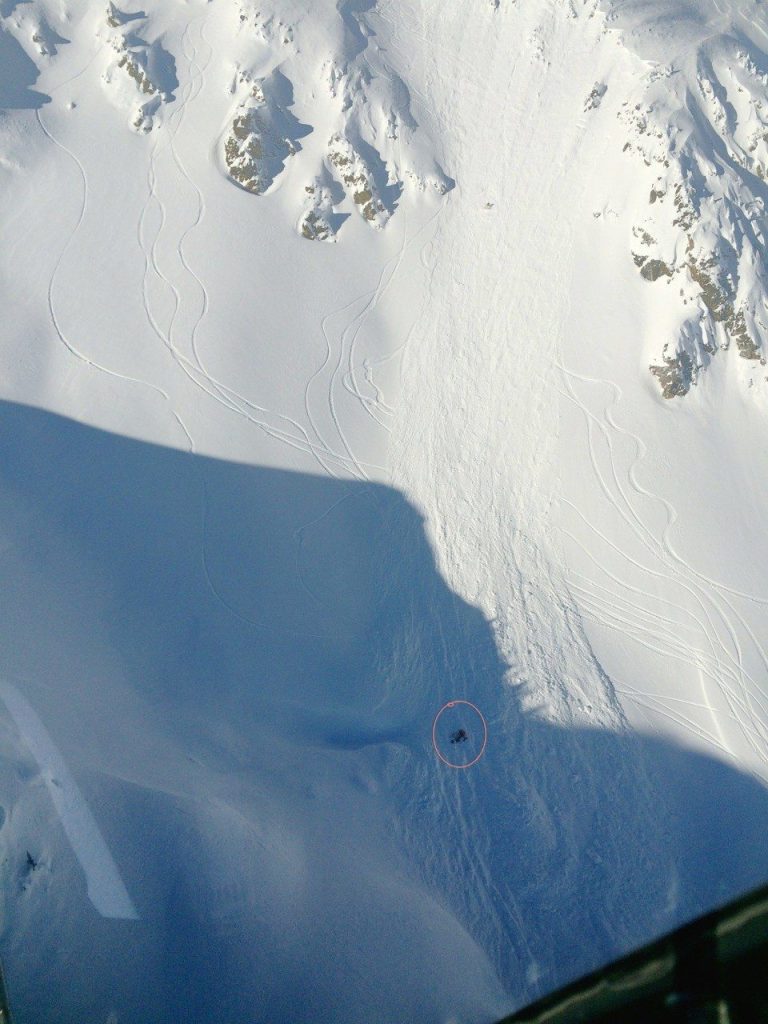
This shot was taken by the pilot of the heli – that’s me in the circle.
Both skis came off, and I got rid of my poles. I found myself sitting on the side of the avalanche, facing downhill and moving at a pretty swift speed. I uttered a few words of profanity and tried some backstrokes, but quickly realized that relaxing and going with the flow offered my best chance of not hurting myself further and getting buried. In the midst of it all, there was very little time to think about anything other than plotting my survival. The thought of dying in this avalanche never crossed my mind.
After what seemed like an eternity, I finally came to rest a good 200 or 250 meters from where I had started. A few chunks of the debris went over my head, but I had been lucky to stop on a debris-created bench, with my left femur partially buried in a rather uncomfortable position.
The first order of business was to radio up to my companions, letting them know that I wasn’t buried but that I did have a fractured femur. My situation communicated, I then focused on removing my pack, digging out my leg, and placing it gently on the packsack. Adrenaline flowed through my body, and I felt very little pain as I tried to adjust my leg into a more comfortable position. I found comfort in the idea that I’d soon see my friends and family — but first, I needed to deal with my femur.
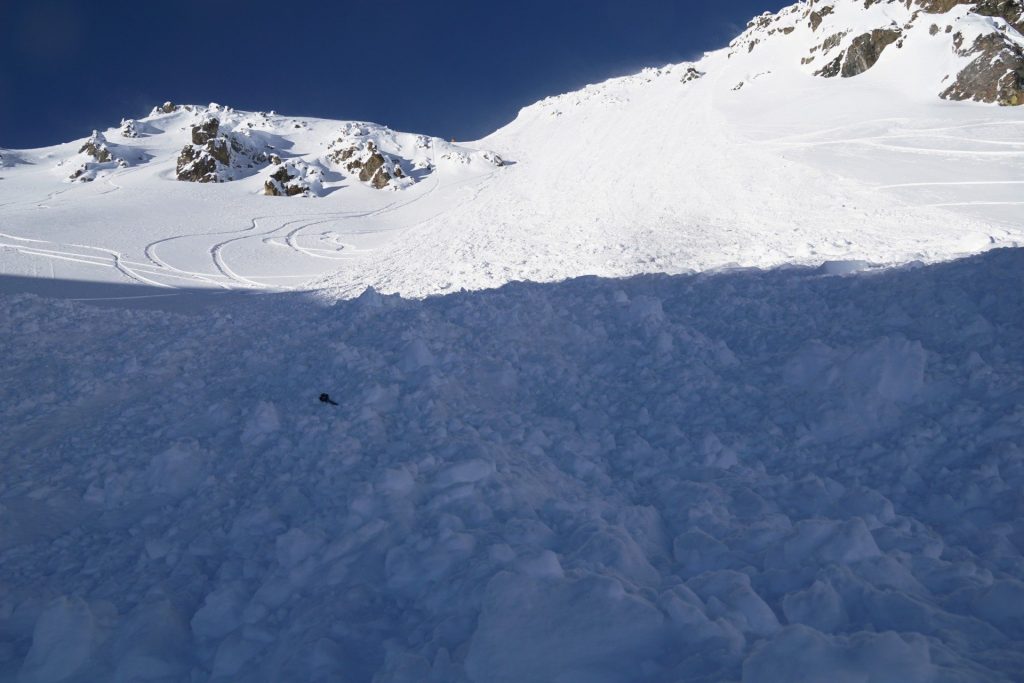
The photo I snapped after I got my femur comfortable.
Moments later, the helicopter landed beside me. The crew quickly got to work, pulling out a stretcher and a trauma kit. I was now in evacuation mode, directing a self-rescue with several members of the group. My plan of action was to get to the Whistler Medical Clinic as fast as possible to get some much-needed narcotics before my femur started to spasm. The group tied my legs together and secured me to the Robertson stretcher, and we managed a quick load-and-go. Only 40 minutes after the event, I found myself at the clinic, in the company of staff I have known for many years.
By the time they got to my ski boots, I was already off in La La Land. I spent the ambulance ride down to Vancouver General Hospital in a medicated slumber, and was in the operating room that very evening. Though my 35 years of good luck had come to an end, I was able to squeeze out one last drop of good fortune: I was operated on by Dr. Blachut, a true craftsman in the orthopedic field. I stayed in the orthopedic ward for two days. The entire time, getting out and going home was my top priority: after all, you can get sick in hospitals.
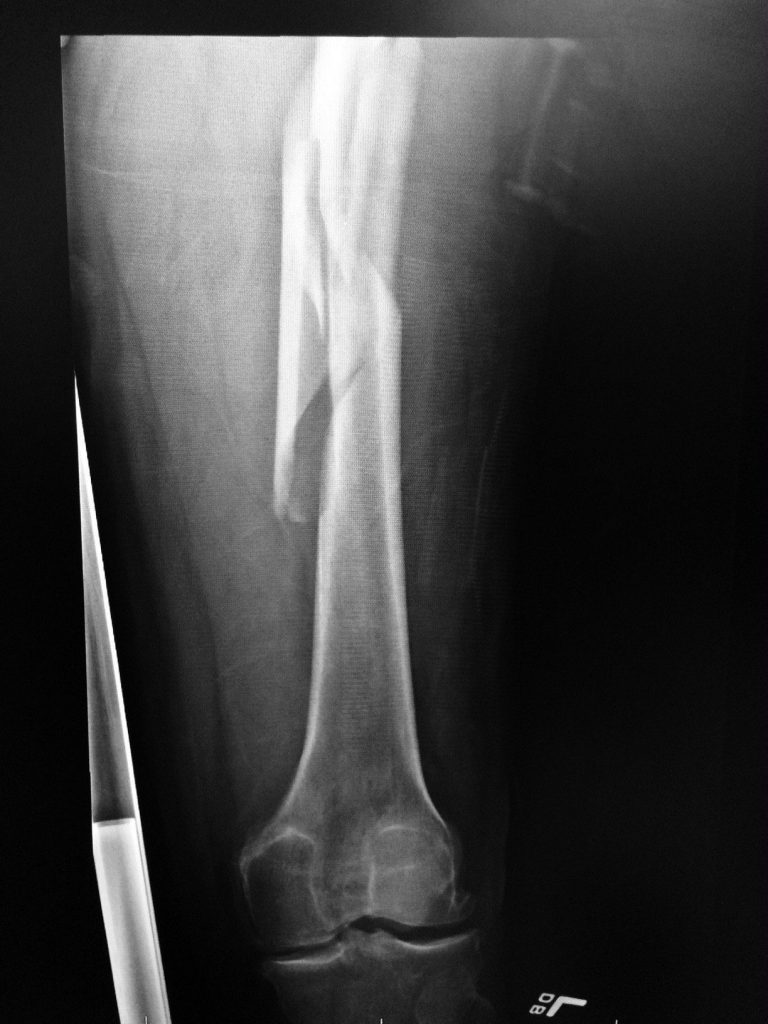
My femur fracture xray.
To date, my recovery is going well. I would like to thank those at the scene for their help, the staff at the Whistler Medical Clinic for their care, the ambulance crews for their great work, the Orthopedic Department at Vancouver General for a new titanium femur, and my partner Suze for her care and nursing of a spoiled patient.
As for what’s next, I am staying very optimistic and trying to maintain a positive attitude. My plan is to be back doing some easy turns by the end of March. Of course, only time will tell, but it’s good to have goals, right?
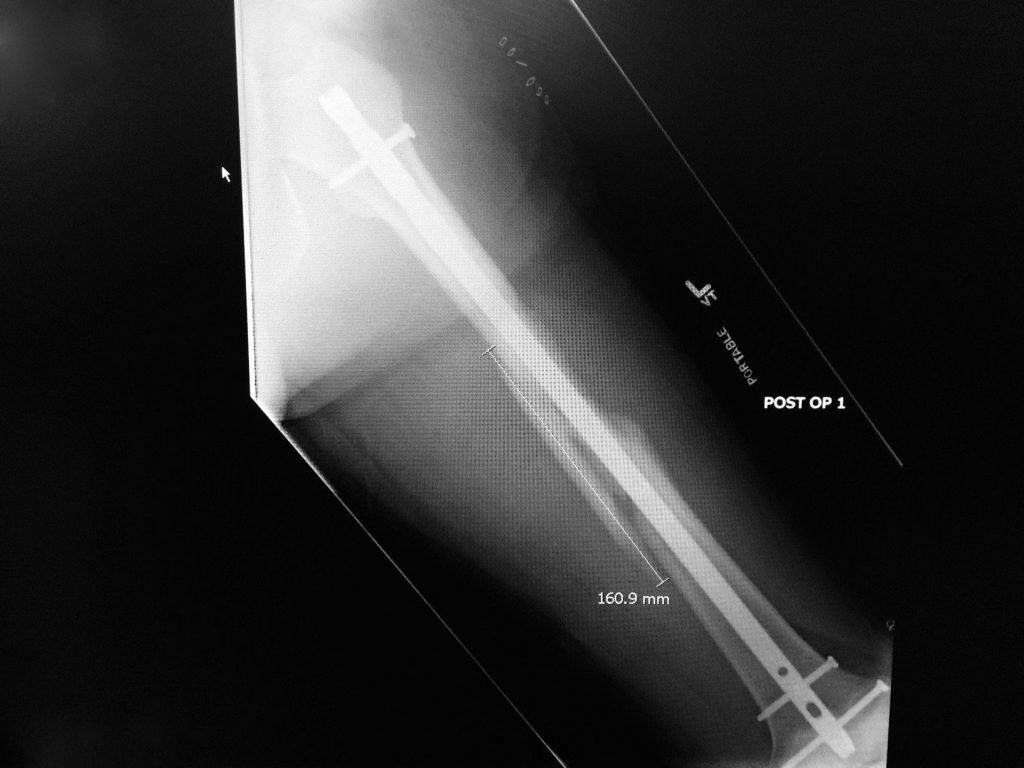
The fracture and nail that is now in my femur.
I now know that December 29, 2014 was a bad day for avalanche occurrences in the Sea to Sky corridor. There were three other reported events occurring the same day as my own: one where a snowmobiler deployed his airbag, which likely saved his life; another, where an experienced guide was caught and deployed his air bag with no consequence; and a third where a ski tourer cut off a small stiff slab but, luckily, did not get caught in the avalanche.
To read more of Wayne’s stories and avalanche posts visit his blog.
— wayneflannavalancheblog.com

